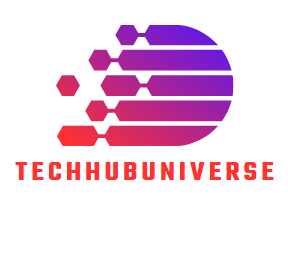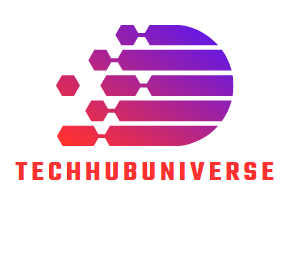Data processing workflows must be flexible, scalable, and efficient in the rapidly evolving world of big data and cloud-native applications. Organisations across industries increasingly deal with batch and stream data processing requirements, often within the same applications. Traditional data processing frameworks specialise in one mode, requiring separate tools and skill sets for different workflows. Apache Beam offers a unified programming framework that addresses these challenges by enabling the development of portable, scalable, and efficient data pipelines.
This essay explores optimising data processing using Apache Beam for scalable workflows. It will cover the architecture of Apache Beam, key abstractions, runner flexibility, and optimisation strategies for building powerful and efficient data pipelines. Due to its unified handling of batch and stream processing, Apache Beam is also a central component in many advanced Data Science Course curriculums.
Introduction to Apache Beam
Apache Beam is an open-source unified programming model for defining and executing data processing workflows. Originally developed by Google as part of the Dataflow SDK, Apache Beam has evolved into a top-level project at the Apache Software Foundation. It provides a consistent API for writing batch and streaming data processing jobs and supports multiple execution engines (called "runners"), such as Apache Flink, Apache Spark, and Google Cloud Dataflow.
Key Features:
● Unified Model: The same pipeline code is used for batch and streaming data.
● Portability: Write once and run anywhere. Beam pipelines can run on any supported runner.
● Extensibility: Modular design allows for custom IO connectors and transforms.
● Advanced Windowing and Triggering: Ideal for complex streaming use cases.
Beam’s design allows developers to focus on what to compute while delegating how it’s computed to the execution engine, making it easier to optimise workflows for performance and scale.
Core Abstractions in Apache Beam
To understand how Beam optimises data processing, it is crucial to grasp some core abstractions. Here are a few that are covered in detail in any Data Science Course.
PCollection
A PCollection is Beam’s abstraction for a dataset, which can be bounded (batch) or unbounded (stream). Every data processing operation in Beam works on PCollections.
PTransform
A PTransform represents a data processing operation, such as a Map, Filter, GroupByKey, or a composite transform that chains multiple operations together.
Pipeline
A Pipeline is the top-level container for all data processing steps. It defines the workflow from data ingestion through transformation to output.
Windowing
Beam’s windowing feature divides unbounded data into logical windows based on time or custom conditions. It is critical for real-time streaming use cases.
Triggers
Triggers determine when results for a window are emitted. They could be initiated based on event time, processing time, or custom logic.
Watermarks
Watermarks track the progress of event time and help Beam determine when it is safe to emit results for windows.
Setting Up a Beam Pipeline
To optimise data processing with Beam, a well-structured pipeline is essential. Here is a simplified example in Python:
import apache_beam as beam
from apache_beam.options.pipeline_options import PipelineOptions
options = PipelineOptions(
runner='DirectRunner',
temp_location='gs://your-temp-bucket/tmp/',
project='your-gcp-project')
with beam.Pipeline(options=options) as pipeline:
(pipeline
| 'ReadInput' >> beam.io.ReadFromText('gs://your-bucket/input.csv')
| 'ParseCSV' >> beam.Map(lambda line: line.split(','))
| 'FilterValid' >> beam.Filter(lambda record: len(record) == 3)
| 'WriteOutput' >> beam.io.WriteToText('gs://your-bucket/output.txt'))
This basic pipeline reads from a CSV, parses and filters it, and writes the results. In real-world applications, pipelines can include complex joins, aggregations, side inputs, and multi-output transforms. A practical data course, for example, a professional-level Data Science Course in Mumbai often includes such real-world examples using Beam to teach scalable ETL practices.
Optimisation Strategies for Scalable Workflows
Choosing the Right Runner
Beam supports multiple runners, such as Google Cloud Dataflow, Apache Spark, and Apache Flink. It is crucial to select the right runner based on workload characteristics (latency sensitivity, throughput, resource constraints).
Dataflow is ideal for fully managed autoscaling pipelines.
Flink provides high-performance and stateful streaming capabilities.
Spark is suited for environments already leveraging the Spark ecosystem.
For scalability, distributed runners like Flink and Dataflow offer better performance and elasticity than local or direct runners.
Efficient Use of Windowing and Triggers
Streaming data pipelines benefit immensely from proper windowing strategies. Types of windows include:
o Fixed Windows: Uniform time intervals (for example, every 5 minutes).
o Sliding Windows: Overlapping windows (for example, last 10 minutes every 1 minute).
o Session Windows: Based on user activity gaps.
Pairing windows with appropriate triggers ensures timely and accurate output. Example:
| 'WindowInto' >> beam.WindowInto(
beam.window.SlidingWindows(size=600, period=60),
trigger=beam.trigger.AfterProcessingTime(120),
accumulation_mode=beam.trigger.AccumulationMode.DISCARDING)
This setup allows timely computation while preventing data staleness.
Avoiding GroupByKey When Possible
While GroupByKey is essential for operations like joins and aggregations, it can be expensive and may lead to data skew. Alternatives include:
Combining with CombinePerKey: More efficient than raw grouping.
Partitioning keys: Spread out heavy keys to avoid bottlenecks.
| 'CombineByKey' >> beam.CombinePerKey(sum)
Side Inputs for Lookup Data
Use side inputs to bring in static or slowly-changing datasets (like reference tables or configuration values). This avoids costly joins and makes the pipeline more efficient.
side_input = pipeline | 'ReadLookupTable' >> beam.io.ReadFromText('lookup.txt')
main_input | beam.Map(lambda element, table: enrich(element, table), beam.pvalue.AsDict(side_input))
Use of Combiner Functions
Combiner functions (for example, beam.CombineGlobally, beam.CombinePerKey) reduce intermediate data shuffling and memory usage. They are especially useful for summing, averaging, or finding min/max values.
Performance Monitoring and Logging
Beam supports robust monitoring and logging via runners. For example, Google Dataflow provides detailed job graphs, CPU/memory usage, and watermark progression. Logging intermediate values, metrics, and errors helps catch bottlenecks early. These tools are frequently practised during lab sessions in a professional Data Science Course to teach observability and performance tuning.
Scalability Considerations
Autoscaling with Cloud Runners
When using runners like Dataflow, Beam supports autoscaling to match workload demands. This improves cost-efficiency and performance, especially for spiky or unpredictable data volumes.
Dynamic Work Rebalancing
Beam supports dynamic work rebalancing, which ensures idle workers can "steal" work from busy ones, improving overall throughput and reducing processing skew.
Parallelism and Sharding
Breaking data into smaller shards allows parallel processing across workers. Use Reshuffle or ParDo with appropriate partitioning logic for even load distribution.
Real-World Use Cases
Apache Beam is used across industries for diverse data processing tasks:
● Media: Spotify uses Beam for real-time event tracking and recommendation.
● Finance: Real-time fraud detection and risk assessment pipelines.
● Healthcare: Streamlining patient data processing and diagnostics.
● Retail: Real-time inventory updates and customer behaviour analysis.
Its ability to unify stream and batch processing in a single model makes it ideal for hybrid applications. It is often included as a capstone project in a Data Science Course focusing on big data infrastructure.
Benefits of Using Apache Beam
● Unified API: Simplifies development and reduces duplication.
● Cross-platform Execution: Choose the best runner without rewriting code.
● Advanced Time-based Semantics: Accurate and timely data handling in stream processing.
● Scalability: Designed to scale horizontally across cloud-native infrastructure.
● Community and Ecosystem: Active development with strong community support and third-party IO connectors.
Conclusion
Apache Beam represents a significant shift in the way data engineers and scientists build scalable data pipelines. By offering a unified model for batch and streaming, Beam reduces the complexity of managing separate systems and allows teams to focus on logic and outcomes rather than infrastructure.
To optimise Beam for scalable workflows, developers should carefully design pipelines with efficient windowing, minimal data shuffling, and appropriate runner selection. With powerful features like side inputs, dynamic work rebalancing, and auto-scaling, Beam ensures high performance for modern data workloads.
Apache Beam provides a flexible and future-proof foundation, whether you are building real-time analytics, ETL jobs, or machine learning pipelines. Mastering Beam is valuable for real-world applications and is a core competency taught in a well-rounded data course such as a Data Science Course in Mumbai and such reputed learning centres emphasising scalable architectures and cloud-native technologies.
Business name: ExcelR- Data Science, Data Analytics, Business Analytics Course Training Mumbai
Address: 304, 3rd Floor, Pratibha Building. Three Petrol pump, Lal Bahadur Shastri Rd, opposite Manas Tower, Pakhdi, Thane West, Thane, Maharashtra 400602
Phone: 09108238354
Email: enquiry@excelr.com


Post a Comment